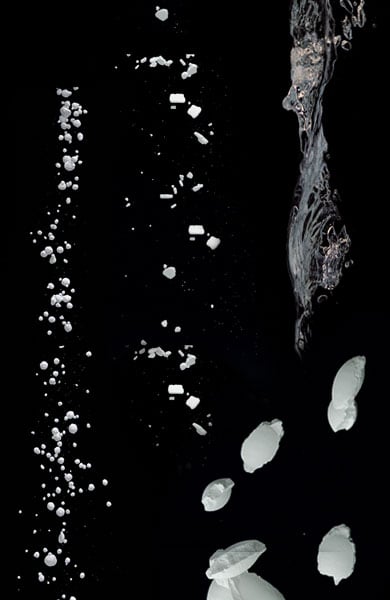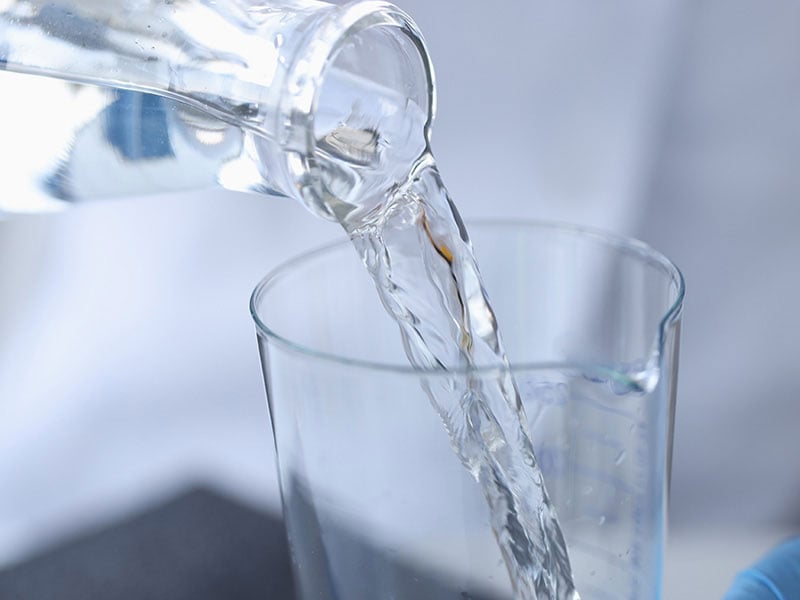How to Dilute, Recondition, and Dissolve Calcium Chloride

Calcium chloride (CaCl2) from OxyChem is one of nature's uncommon wonders. This specialty salt features unique properties that can be used to improve driving and pedestrian safety, prevent unhealthy dust from the air we breathe, and enhance the performance of products and processes that contribute to the supply of energy, food, and other essentials of life.
Calcium chloride is easy to dilute, recondition, and dissolve to achieve the perfect concentration for a given application.

How to Dilute Liquid Calcium Chloride
Different applications of calcium chloride may call for different concentrations of the product. This can be achieved by using water, a lower concentration calcium chloride solution, or both water and a lower concentration calcium chloride solution. All three scenarios are covered in our easy-to-use Diluting Solutions Calculator. Simply enter the desired dilution medium, the starting and target concentration levels, and the starting amount of calcium chloride. The calculator does the rest, determining how much water and/or calcium chloride to add and providing the final solution volume you can expect.
How to Recondition Calcium Chloride
Opened packages of calcium chloride should be tightly resealed and stored in a dry place. When calcium chloride is stored in a manner that allows contact with humid air, the product is likely to become caked. If lightly caked, the product may be broken up into usable form by knocking the closed package against a hard surface, similar to breaking up a purchased bag of ice. In other cases, the caked product may be too hard for this approach to be effective. Use of forceful hammering is not likely to be effective and is not recommended, as flying chips of product could be a hazard, particularly to the eyes. Caked product that cannot be broken up into usable form may be disposed of according to the guidance on the product label.
How to Dissolve Solid Calcium Chloride Products in Water
Prior to preparing a calcium chloride solution, consult our Making Solutions Calculator to accurately determine the necessary volume of water and mass of calcium chloride needed to achieve your desired concentration levels for liquid calcium chloride.
Significant heat is released when dissolving solid calcium chloride, so it’s important to use cool water when creating solutions. Add solid calcium chloride slowly to the cool water while continuously mixing. Do not add water to calcium chloride to dissolve. If solids are allowed to sit motionless while in contact with water, a hard cake will form that will be slow to dissolve.
When solid calcium chloride is dissolved, the temperature increase that occurs will vary depending on the conditions associated with each specific application. For example, when dissolving DOWFLAKE® Xtra 83-87% Calcium Chloride Flakes, assume a temperature increase of 2.8°F per percentage increase in concentration. When making up a 30% solution, the temperature can be expected to increase approximately 84°F (30 x 2.8°F = 84°F). Refer to the Making Solutions Calculator for specific solution details.
OxyChem is the World Leader
OxyChem is the world’s largest producer of calcium chloride. Our production facility in Ludington, Michigan utilizes an abundant supply of naturally occurring brine to produce liquid and solid calcium chloride products, each processed to meet specific application requirements.
Learn more about how calcium chloride is used to improve the safety and quality of everyday life, and how it increases the efficiency and quality of processes and products, by exploring our website. To learn more about specific calcium chloride topics, view our Frequently Asked Questions.